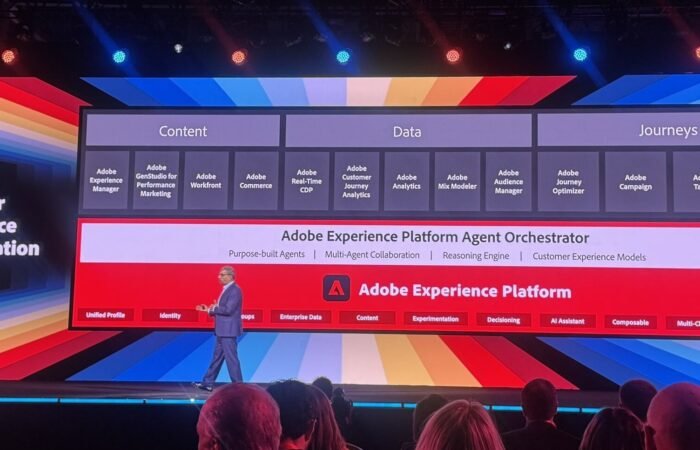Digital experience platforms (DXPs) have replaced CMSs as the go-to platforms for managing content experiences. Along with the classic DXP, composable DXPs have also been growing in popularity in place of legacy and traditional CMS platforms.
But what are all these different types of DXPs? Why are they growing in popularity? And how can your business implement one? In this article, we’ll explain everything you need to know.
What is a Digital Experience Platform (DXP)?
A digital experience platform (DXP) is a set of integrated technologies businesses use to manage the entire digital experience, from creation to management, delivery, optimization, and conceptualization.
DXPs have evolved to take the place of the traditional CMS, which only manages content for one channel. Now that the customer journey spans a number of different channels, from desktops and mobile devices to smartwatches and other IoT devices, businesses need more when it comes to the digital customer experience.
Whereas a CMS is only responsible for managing content, a DXP connects the different facets of your marketing technology stack and pulls everything together. Data from an analytics tool, content assets from the DAM solution, customer data from the CRM, marketing automation, ecommerce systems, and more.
There is no one-size fits all approach to selecting a DXP. In the modern era of digital experience management, companies opt for one of two different types of DXPs: a composable DXP or a suite DXP.
What is a Composable DXP?
A composable digital experience platform (DXP) is assembled from various best-of-breed solutions. It creates and manages digital experiences across different digital touchpoints. These best-of-breed tools that make up a DXP are connected via APIs, enabling loose coupling between software.
With a composable DXP, you can choose the various systems that make up your technology stack. At the core of a composable DXP sits a headless CMS that handles everything content-related and integrates with additional tools needed for digital experience management using APIs.
Platforms like Contentful and dotCMS are prime examples of composable DXPs. These headless CMS solutions can create and manage an omnichannel customer experience that spans multiple devices. They can also connect to a host of additional tools, such as leading analytics, marketing automation, and ecommerce platforms, allowing you to custom-build your technology stack as you see fit.
Content management vendors like Sitecore also offer a composable DXP that can be constructed using best-of-breed tools. Plus, Sitecore provides several different SaaS products, that are normally part of its suite package, as separate products. This allows businesses to quickly select powerful technologies to form their composable DXP without having to go through the added hassle of working with additional vendors.
What is a Suite DXP?
A suite DXP is a digital experience platform that comes as an all-in-one solution. It usually contains a CMS and other business tools such as analytics, personalization, digital asset management, and more.
The aforementioned Sitecore provides a suite DXP option via its Sitecore XP solution that includes a CMS, marketing automation, analytics, personalization, A/B testing, and more. Adobe Experience Manager (AEM) is another example of a suite DXP that provides a CMS, digital asset management, and analytics, a complete all-in-one system.
While every DXP allows the sharing of information between the other tools that make up the martech stack, a suite DXP provides a similar interface that offers the same look and feel throughout all of their products, which can be an added advantage for some companies. However, one drawback for some businesses could be the fact that if one of the components in a suite isn’t updated it may be difficult to grow alongside evolving technologies.
Why are businesses opting for a DXP?
Whether they choose a composable or suite solution, many enterprises are leaving behind their traditional CMS options in favor of a digital experience platform. Some of the reasons why include the following:
Growing Customer Expectations
Businesses today need to cope with multiple digital channels and, as a result, need more than just a CMS to help them. A DXP allows them to meet these customer expectations for content on multiple channels, delivered at speed.
Omnichannel Requirements
Customer journeys aren’t limited to only one or two touchpoints. Many consumers pass through tens of digital touchpoints before converting, even toggling between these channels. To appeal to the modern customer, brands need to create an omnichannel strategy that delivers a seamless experience no matter where a customer is located. That becomes a possibility with the help of a DXP.
Personalization Requirements
Another thing the modern customer practically demands from companies today is personalization. This requires access to content and customer data to make it unique to each consumer. A DXP provides the ingredients to accomplish true personalization.
Faster Time to Market
Major enterprises, particularly multinational brands with several locations, need to be able to move quickly. With a DXP, they can quickly roll out new campaigns across multiple channels, personalize the customer experience and track the results in one place.
Benefits of a Composable DXP
Along with the benefits of a DXP, going the composable route comes with additional benefits that may make it more appealing.
Chance to Embrace MACH Architecture
An increasing number of companies are realizing the appeal of building their technology stacks using MACH architecture. MACH involves a modular approach that allows you to swap technologies and customize a DXP to fit the specific needs of your business.
Lower Total Cost of Ownership
Suite DXPs often come with a higher total cost of ownership because they include several tools that a business may only sometimes use. With a composable DXP, you can select only the technologies you require.
Increased Flexibility
Flexibility is another benefit of a composable DXP, as it allows you to make changes quickly and adapt as market conditions change. If the ecommerce solution you originally picked doesn’t fit the business needs anymore, you can choose a different platform instead without having to replace all of your other tools. The same goes for the CMS, CRM, or any other piece of software within the Martech stack.
Best-of-Breed Ecosystem
One of the slight drawbacks of a suite DXP is that while you may have access to additional tools besides the CMS, there might be better solutions on the market. A composable allows you to select from several best-of-breed tools and pick which ones make up your technology stack. Also, integrating with leading tools may be easier than what is available in a suite package.
Assessing Your DXP Choices
A few options are available to businesses ready to embrace a DXP. At Content Bloom, we can assist with any option you choose, but it’s important to know what you can do.
- Suite DXP
The suite DXP option, such as with AEM or Sitecore XP, gives you a host of products as part of an all-in-one solution. While many consider suite DXPs to be outdated or monolithic, the beauty of these platforms is that you can still leverage headless CMS capabilities and integrate with other products as you see fit.
- Composable DXP with Sitecore
Sitecore also offers a composable DXP option with Sitecore XM, its CMS solution, and several other SaaS products, including Sitecore Search, CDP, Discover, and others. You can pick the tools that you need while working with one vendor.
- Composable DXP with a Headless CMS
You can build your own composable DXP from scratch with a headless CMS at the center of everything. With platforms like dotCMS and Contentful, you can integrate any ecommerce platform, analytics solution, and anything else you need for your martech systems. This is useful if you already have a few tools that you want to keep using but want to improve the digital experience for your customers.
Build Your Perfect DXP with Content Bloom
Digital experience platforms allow you to create a more engaging experience for your customers that spans multiple channels. You can integrate several different tools and connect data, insights, and content across the entire enterprise. Plus, you can future-proof your business against changing market trends and easily adapt as necessary.
To build the best DXP for your business, it helps to have expert help. At Content Bloom, we are experts in all things DXP and can help you assess the right choice for your business, whether a suite or a composable platform.
Our partnerships and experience with leading DXP providers, including Sitecore, Adobe AEM, dotCMS, and Contentful, allow us to handle everything you need to start creating a perfect digital experience, from CMS migration services to headless CMS implementation and maintenance.
Ready to transform your digital experience? See our entire list of end-to-end digital consulting services and contact us today to get started.
FAQ
Who uses a DXP?
Businesses of all sizes can benefit from a DXP, but enterprises that need to deliver content to multiple channels and integrate data from various sources are likely to benefit the most.
How does a DXP work?
A DXP provides a central point of control for the entire digital experience, allowing brands to integrate various tools to manage and orchestrate the customer journey from start to finish.
What is the difference between a Composable DXP and a CMS?
A CMS allows you to manage content, usually for one channel, or multiple channels, if using a headless CMS. A composable DXP includes a CMS but integrates other tools that make up your marketing technology stack.





